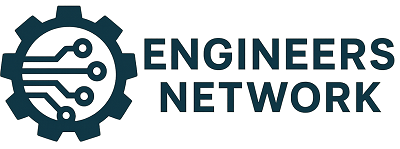In today’s evolving tech landscape, the boundary between engineering and creative disciplines is growing thinner. Artists are working with algorithms, and engineers are building systems to generate visual language. Menajem Perez sits at this intersection. While known as a digital artist, his method is strikingly similar to how engineers approach design problems: with structure, iteration, and tool-driven refinement.
Perez’s use of artificial intelligence isn’t impulsive or improvisational. It’s disciplined. Behind each of his emotionally charged visuals lies a series of decisions that reflect a process more aligned with engineering logic than spontaneous creation. He doesn’t just make images, he builds them.

Structured Process Over Spontaneity
Menajem Perez Gallery begins from the computer screen. His process starts in nature hiking, walking, observing. But even these moments are part of a larger system. He doesn’t create in the field. He gathers data in the form of impressions, sounds, environmental shifts, and silence.
Once back in his studio, the work begins with recall. This is where the engineering mindset emerges. Rather than jump straight into design, Perez gives space for the memory to filter and stabilize. Only then does he begin feeding that internal data into AI tools to begin shaping an output.
This workflow mirrors a familiar engineering cycle: observe, collect, analyze, synthesize. There’s no randomness here. Each step is part of a system that, when repeated, builds consistency into an otherwise emotional or abstract practice.

Tool as Interpreter, Not Generator
In engineering, tools like CAD or simulation software are not used to create something from nothing. They are used to explore, refine, and bring precision to a concept. Menajem Perez approaches AI in a similar way.
For him, AI is not the author, it’s the interpreter. The prompts he inputs are structured around memory and mood, not just aesthetics. He adjusts parameters the way an engineer tweaks material properties or testing constraints. AI is a partner in execution, not a replacement for authorship.
This technical fluency is what separates Perez’s approach from more trend-driven applications of generative art. He’s not interested in what the tool can do on its own. He’s interested in what it can help him communicate more clearly.

Iteration and Adjustment
Iteration is a core principle in engineering. No system is built perfectly on the first try. Refinement through testing and feedback loops is expected. Perez treats his digital art in the same way.
Once the AI produces an initial result, he doesn’t publish it. He revises. A texture might need softening. A light source might feel too sharp. The balance between abstraction and recognizability is evaluated and adjusted. Each version moves closer to the emotional accuracy he’s aiming for.
These small calibrations accumulate. Over time, they create a visual system that feels less like art-as-expression and more like art-as-engineered-emotion, deliberate and testable.

Precision in Service of Expression
Although the final images by Menajem Perez evoke calm, nostalgia, or solitude, they are built on precise decisions. Colors are selected to match temperature. Shapes are constructed to suggest depth without overdefining it. Details are often removed to prevent distraction.
This attention to system-level control mirrors engineering principles: build something that works, remove what isn’t needed, optimize for performance. For Perez, the performance metric isn’t efficiency, it’s emotional resonance.
And that’s where the overlap becomes meaningful. Engineers often design for clarity, reliability, and effect. So does Perez. The difference is that his work communicates through atmosphere rather than output.

Designing With Emotion
Menajem Perez’s use of AI demonstrates that engineering logic and emotional intention are not opposites. They can inform each other. His work is a reminder that precision, iteration, and tool fluency don’t have to dilute creativity; they can focus it.
For engineers exploring creative tools, or artists looking to borrow from engineering workflows, his process offers a model. It’s not about replacing the human element with a machine. It’s about building a process that supports the human element more completely.
In that way, Menajem Perez isn’t just creating digital art. He’s engineering memory one quiet, structured image at a time.




Leave a Reply